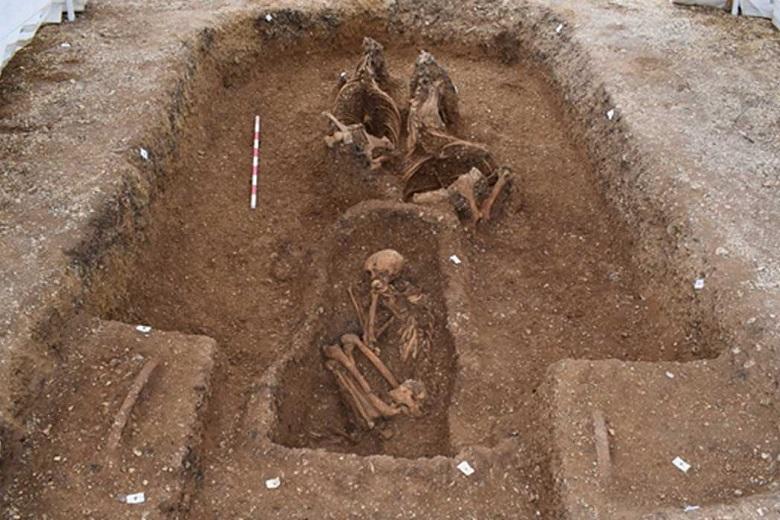The second Iron Age chariot in the past two years has been discovered in English Yorkshire. The discovery was made at a building site in Pocklington, where a residential complex of 200 houses is being built.
For about six months, archaeologists have been trying to completely excavate and extract the find, which promises to be a natural sensation. After all, together with the chariot, they found the remains of a horse and a rider.
Simon Usher, Managing Director of Persimmon Homes Yorkshire, said: “We can confirm that a significant archaeological discovery has been made at our site The Mile in Pocklington – scientists have found an Iron Age horse chariot. Archaeologists are conducting a thorough excavation and studying the find in detail.”
It may sound incredible, but 18 months earlier, another Iron Age chariot was discovered at another construction site in Pocklington, along with the remains of two horses. At the time, Archeology Arts staff reported that “the chariot was buried in a unique funerary practice that was not unusual in the Iron Age. Nevertheless, horses are rarely found in such burials”.
According to the Daily Telegraph, “the discovery of discovery dating back to 500 BC is the first of its kind in the past 200 years. Earlier, only 26 chariots were excavated in the UK.” Archaeologists say it is highly uncommon for a horse and chariot to be buried with a human.
In 2017, Paula Ware, Managing Director of MAP Archaeological Practice Ltd, told a reporter: “The chariot was located in the last square mound on the outskirts of the cemetery, which has yet to be fully excavated. These discoveries can expand our understanding of the culture of Arras (Middle Iron Age), especially given the ideal condition of the artifacts.”
The chariot belonged to a person of high status. Therefore, researchers are racking their brains over why a horse was also buried in the grave. Before the chariot was found, many artefacts were unearthed during excavations at Burnby Lane, including a sword, shield, spears, brooches and pots.
Such excavations provide an opportunity to at least take a peek at how people lived more than 2500 years ago. It is believed that these were the people of the Arras culture.
It is in Yorkshire that the strikingly well-preserved remains of the Arras culture continue to be found. In 2016, about 150 skeletons and personal belongings of these people were discovered in a small market city at the foot of the Yorkshire Hills.
According to The Guardian, some of the 75 “square mounds,” or burial chambers, contained personal items such as jewellery and weapons. Archaeologists have also found a skeleton with a shield. Media reports that these remains belonged to a man in his early twenties, who died with a sword in his hand. Before his death, he was pierced with six spears so that he looked “like a hedgehog.”
These burials are believed to date back to the Iron Age, which in Britain lasted from 800 BC. up to the time of the Roman conquest (starting in 43 AD).
Scientists want to conduct an in-depth study on whether this population is indigenous or whether the people came to Yorkshire from the continent. Archaeologists also hope to uncover how those buried at the scene died and whether they are related to each other and potentially conduct DNA analysis.
The custom of burying the dead with chariots was unknown in the rest of Iron Age Britain.
